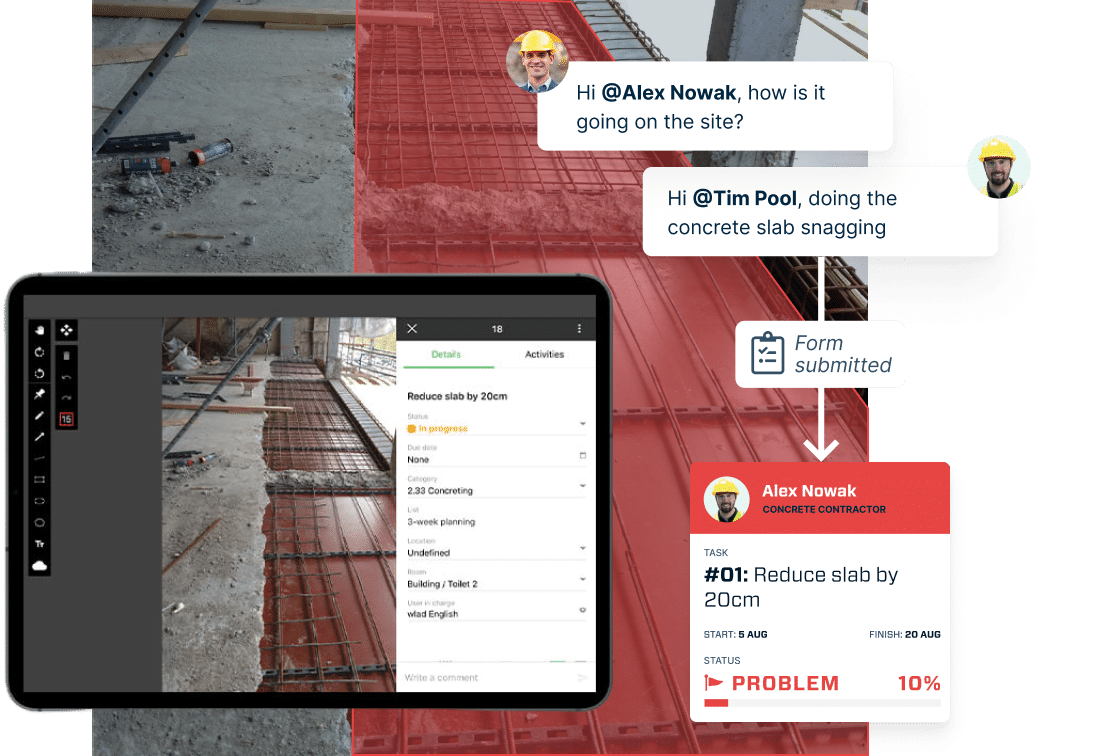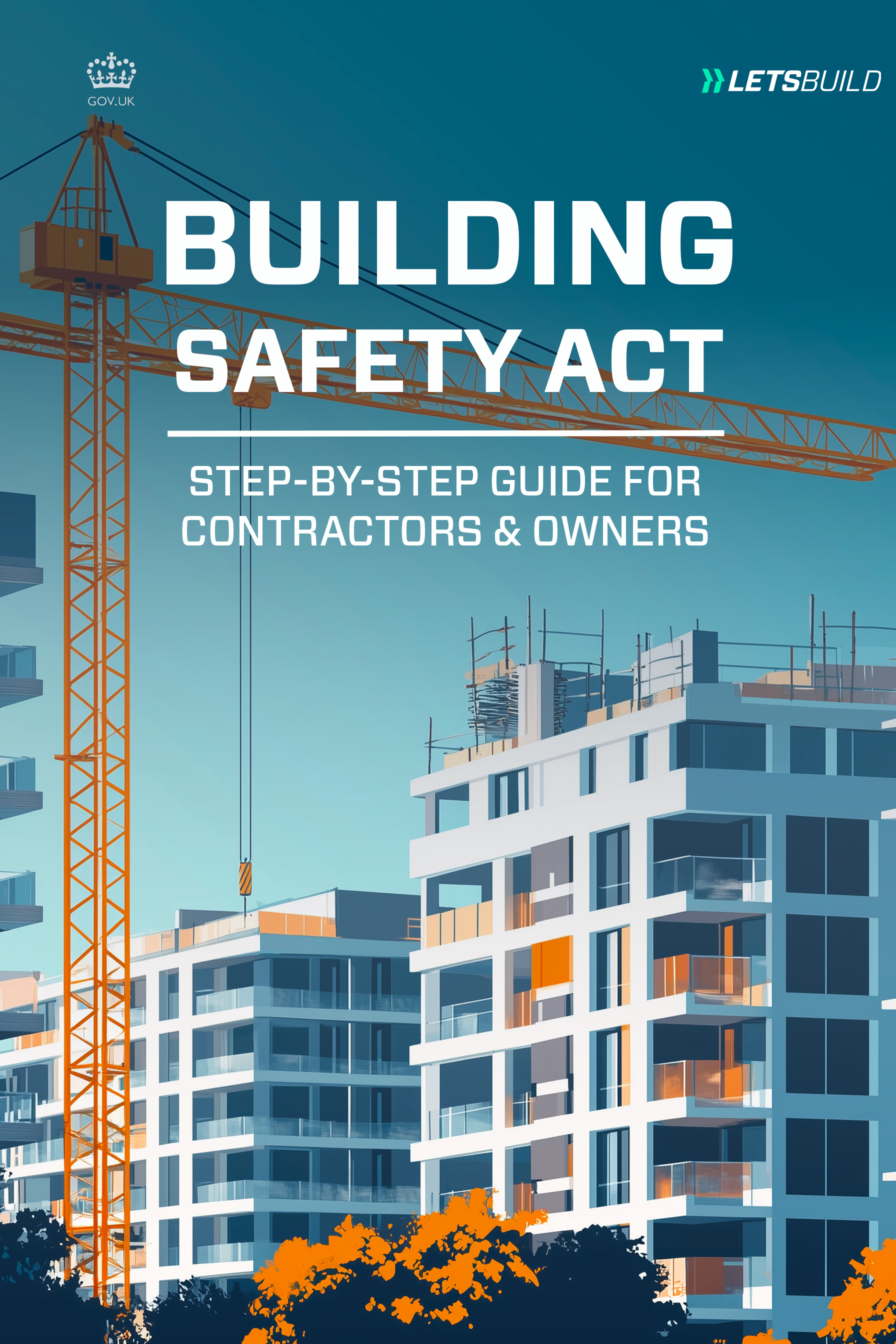If you’re relatively new to the construction industry, you’re sure to hear plenty of terms that leave you scratching your head. If you’ve recently come across the term “punch list” or “snagging list” and you’re wondering exactly what it is (and what to do with it), you’ve come to the right place.
Today, we’ll be taking you through everything you need to know about the punch list, from its definition to its layout to its common uses.
What is a punch list?
In almost every industry, human error can lead to timely, costly mistakes. In fact, on average, we each make 118 mistakes at work every year. That’s why good businesses make sure to minimize the chance of human error wherever possible. In hospitality, for instance, a waiter who writes down his orders is far less likely to deliver the wrong dish to his table. Or, in filmmaking, a cinematographer who notes down his shot list before he starts filming is far less likely to forget to film a crucial part of the scene.
Free eBook: Guide to a digitised QHSE organisation
In construction, the concept is exactly the same. Every construction project consists of numerous small tasks—while some may be less important than others, every task must be completed before the entire project is officially finished.

A punch list (also sometimes referred to as a snag list, a deficiency list, or a punch-out list) is the document used to check that every single remaining task on a project has been done—think of it as a to-do list for the final stages of a project.
On most projects, the punch list is drafted by the contractor and/or site owner near the end of the work. The aim of the list is to keep track of any leftover tasks or small fixes that need to be completed. Some contractors like to begin their punch list at the beginning of a project; however, by creating a punch list during the final stages of a project, you’ll be able to narrow down your list to the specific tasks that are outstanding.
Webinar: How to connect your Snagging & QHSE processes to avoid claims and regain control
With a punch list, a construction company has clarity—they know exactly what needs to be completed before they receive payment and finish the job.
Why is it called a punch list?
Wondering why it’s called a “punch list” rather than a “construction milestone checklist”? Well, for one thing, “punch list” is a lot snappier!
However, the real reason dates back to the days when people punched literal holes into the paper next to completed items on their to-do lists. So, when you’ve “punched” every item on the list, that list is complete.
Note that in countries like the UK, Ireland, Australia, and New Zealand, punch lists are usually referred to as “snag lists.” The name comes from the term “snagging,” which is a process that occurs roughly two weeks before the proposed completion date of a project to check what remains to be done.
Further read: Construction checklists – Ultimate guide
What are punch list items?
Because the punch list is essentially the list of remaining tasks on any given construction project, punch list items can range greatly from site to site. These items could include anything from a final coat of paint to fixing wall dents to removing excess building materials from the site. In other words, anything that the owner of the site wants to be done before the final day of the project could appear on the punch list.
Punch list best practices
Wondering how to create and use a punch list on your construction sites? Here are a few of the best practices that every contractor should try to follow:
- The general contractor should work with speciality contractors and the site owner to create a workable punch list on site. Schedule a time for a site visit when the contractors and owner can agree upon any outstanding tasks that should be added to the final punch list. This way, there will be no disputes or disagreements about the items on the punch list, and everything should be completed on time.
- Include architects and designers in the punch list, too. They will sign off on punch list items and confirm whether or not the work matches their original designs.
- Use technology to improve your punch list process. Already, 85% of people who use project management software believe that it frees up admin time. The days of writing out a punch list by hand are a thing of the past. Use project management software to create an easy-to-read, easy-to-access, up-to-date punch list that the entire team can access from anywhere.
Discover construction management software and digitize your punch lists

Running a construction company can be pretty stressful. After all, the punch list is just one of the many documents you need to keep track of for each of your sites. Feeling overwhelmed by the administrative paperwork? With construction management software, you’ll be able to automate and organize your construction project processes so that everything runs like clockwork—and every single item on every single punch list is completed on time.
At LetsBuild, we offer easy-to-use, customizable software so that you can stay on top of your projects without the hassle. Download our QHSE eBook or request a demo to get started today.





